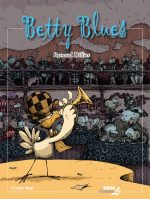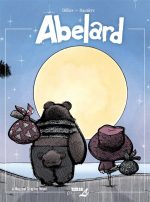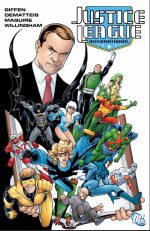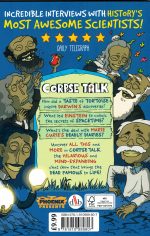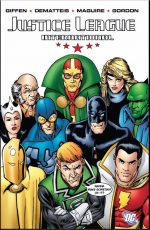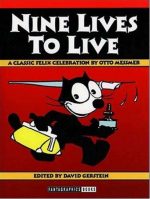
By J.-C. Méziéres & P. Christin with colours by E. Tranlé and translated by Jerome Saincantin (Cinebook)
ISBN: 978-1-84918-357-4
Val̩rian: Spatio-Temporal Agent blasted off in 1967 in the November 9th edition of Pilote (#420) in an introductory tale which ran until February 15th 1968. Although a huge hit, graphic album compilations only began with second tale РThe City of Shifting Waters Рas the creators concerned considered the first yarn more a work-in-progress and not quite up to their preferred standard.
You can judge for yourself, by getting hold of the first hardcover compilation volume in this cinematic tie-in sequence…
The groundbreaking series followed a Franco-Belgian mini-boom in science fiction comics triggered by Jean-Claude Forest’s 1962 creation Barbarella. Other notable hits of the era include Greg & Eddy Paape’s Luc Orient and the cosmic excursions of Philippe Druillet’s Lone Sloane, which all – with Valérian – boosted public reception of the genre and led in 1977 to the creation of dedicated fantasy periodical Métal Hurlant.
Valérian and Laureline (as the series became) was a light-hearted, wildly imaginative time-travel adventure-romp (a bit like Doctor Who, but not really so much), drenched in wry, satirical, humanist and political social commentary, starring (at least at first) an affable, capably unimaginative by-the-book cop tasked with protecting universal time-lines and counteracting paradoxes caused by casual, incautious or criminally minded chrononauts…
In the course of that debut escapade Valerian picked up fiery, far smarter Laureline, who originated in the 11th century before becoming our hero’s assistant and deputy. The indomitable lass was hot-housed as a Spatio-Temporal operative and soon accompanying Val on missions throughout time and space… luckily for him…
Valérian adventures were initially serialised in weekly Pilote until the conclusion of 13th mission The Rage of Hypsis (January 1st-September 1st 1985) after which the mind-bending exploits simply premiered as all-new, complete graphic novels, until the saga ended in 2010.
(One clarifying note: in the canon “Hypsis†is counted as the twelfth tale, due to the collected albums being numbered from The City of Shifting Waters. When Bad Dreams was finally released in a collected edition in 1983 it was designated number #0).
This terrific third oversized hardback compendium – released to capitalise on the summer’s spectacular movie adaptation from Luc Besson, and also available as an eBook – once again boasts a wealth of text features, including the final chapter of ‘Interview Luc Besson, Jean-Claude Méziéres and Pierre Christin’.
Stan Barets highlights the creative highpoints and methodology of illustrator Méziéres in his essay ‘Méziéres, or the Art of Bande Dessinee’ with plenty of epic examples, garnishing those delights with sidebar ‘Méziéres Seen by Christin’ before throwing a well-deserved spotlight on ‘Évelyne. Tranlé: The One by Whom the Colour Comes’…
‘And Meanwhile’ then explores the artist’s mid-1970s other strips: specifically, semi-autobiographical ‘Mon Ameriqué à moi’ (Pilote, 1974) and sci fi shorts ‘Les Baroudeurs de l’espace’ (1976) and ‘Retour à la nature‘ (1979), both seen in aforementioned Métal Hurlant. This is backed up by Méziéres’ own photo-feature reminisces of his 18 months living the American dream as a cattleman in Montana, Wyoming and Utah as recounted in ‘Far West 67 – The Adventures of a Parisian Cowboy’, before ‘The Stories in this Book’ provides context and a taste of things to come in the stories that follow…
Once more re-presenting a trio of classic formative fantasy-fests, the fabulous fun resumes here with Ambassador of the Shadows originally from Pilote July to October 1975.
The craftily subversive story finds the wide-ranging Spatio-Temporal agents assigned to an arrogantly obnoxious Terran diplomat transferring to the cosmically cosmopolitan space edifice known as Point Central.
Over eons many races and species have converged there for commerce and social intercourse by the simple expedient of bolting their own prefabricated and constructed segment to the colossal, continually expanding higgledy-piggledy whole…
With no central authority, different species take turns presiding over the amassed multitudes via the immense Hall of Screens. However, no decent species would ever physically leave its own tailor-made environment…
And now it is Earth’s turn to take the lead, but, as they vector in for landing, the pompous martinet they are escorting informs Valerian and Laureline of a slight modification in their orders. They are still to act as the Ambassador’s bodyguards but must stay extra-vigilant as Earth is going to uses its term in office to bring “order and discipline†to the lackadaisical way the universe is run.
Think of Britain in the months leading up to the Brexit referendum, if you like…
The assembled races will be invited to join a federation run – and policed – by Earth …and just to make sure, there’s a Terran space fleet of 10, 000 warships manoeuvring just out of Point Central’s sensor range…
Laureline is outraged, but like Valerian can do nothing except acquiesce. For her pains, she is put in charge of the mission’s funds: a Grumpy Transmuter from Bluxte, which can mass-excrete any currency or object of trade or barter forcibly swallowed by its always-scowling other end…
All kitted-out, the human trio and living cash-machine spacewalk to Point Central, but before the mission can begin an alien ambush occurs. Mystery warriors using Xoxos cocoon guns inundate the attending officers and dignitaries and only Valerian escapes plastic entombment.
As the raiders make off with the Ambassador, the Spatio-Temporal Agent gives chase but is easily captured and dragged off too…
By the time Laureline breaks loose they are long gone and she is left to pick up the pieces with stiff-necked human bureaucrat Colonel Diol, Under-Chief of Protocol. Determined but with little to go on, Laureline is cautiously optimistic when a trio of aliens come knocking. Ignoring Diol’s protest at the shocking impropriety, she invites the scurrilous Shingouz into the Earth Segment. They are mercenary information-brokers and claim to have been invited by the Ambassador before his abduction…
From them – and thanks to the discomforted efforts of the Grumpy Transmuter – she purchases a few hints and allegations as well as a map of Point Central which might lead to Earth’s secret allies in the cosmopolis…
With the constantly bleating Diol reluctantly in tow, Laureline undertakes a quest through the underbelly of the station, seeing for the first time the mute but ubiquitous Zools: a much-ignored under-race who have been maintaining Point Central for millennia.
The Earthlings’ perambulations take them to the centaur-like Kamuniks: barbaric feudal mercenaries allied to Galaxity and appreciative of humanity’s martial prowess. Over a lavish feast – liberally augmented by another painfully exotic payment courtesy of the overworked Transmuter – the warriors steer Laureline towards potential suspects the Bagulins: low grade muscle-for-hire who frequent the tawdry red-light sector run by The Suffuss…
Despite Diol’s nigh-apoplexy, the adamant and inquisitive Laureline follows the trail to the sin segment where she experiences the particular talents of the hosts: amorphous shapeshifters who can make any carnal dream literally come true.
Well into overtime now, the exhausted Grumpy buys the help of one Suffuss who smuggles the junior Spatio-Temporal operative into a Bagulin party and the next link in the chain…
And so it goes as, with occasional prodding from the Shingouz, Laureline gets ever closer to the enigmatic beings truly pulling all the strings on Point Central whilst elsewhere Valerian frees the Ambassador from bizarre, ethereal captivity only to find the doctrinaire war-maker is undergoing a peculiar change of heart.
Seemingly landing their deserted ship on a paradisiacal “world with no name†they bask in an idyllic paradise and converse with noble primitives who have an uncanny aura of great power.
These beings built the original section of Point Central – and ruled the universe – before withdrawing from mundane material affairs, but they still maintain a watch over their creation from the shadows and won’t allow any race or species to dominate or conquer their pan-galactic melting pot of space…
In a more physical portion of reality, Laureline follows her final clues to reach the strange central area where Val and the Ambassador lie dazed and confused. By the time they all return to the Earth Segment a few major changes have taken place in the governance of the immense star station but, oddly, the Ambassador doesn’t seem to mind…
Socially aware and ethically crusading, this is one of the smartest, most beguilingly cynical comics tales to catch the 1970s wave of political awareness and still ranks amongst the very best to explore the social aspects and iniquities of colonialism.
And, of course, there’s the usual glorious blend of astounding action, imaginative imagery and fantastic creatures to leaven the morality play with space-operatic fun-filled, visually breathtaking and stunningly ingenious wide-eyed wonderment…
On the False Earths first ran in the newly monthly Pilote (issues #M31 to M34, from 30th November 1976 to March 1st 1977) before being collected as seventh album Sur le terres truquées – spectacularly reinforcing the “Spatio-Temporal†aspect of our heroes through a beguiling cosmic conundrum…
The mission starts in frantic full flow as a very familiar figure fights valiantly and dies ignominiously during a pitched battle in 19th century Colonial India. He doesn’t go easy, however, using his ray gun to disintegrate an attacking tiger before beaming back crucial data stolen from a sinister maharaja equipped with technology he simply shouldn’t have…
In deep space, distraught Laureline sees her man die, but her protests are ignored by heartless, man-despising historian Jadna. The scholar cares little for the oafish warrior undertaking a top-secret mission for her. After all, there’s plenty more where he came from…
That’s literally the case as, a little later, another Valerian infiltrates Victorian London Society; breaking into a swank Gentleman’s Club and crashing a meeting of the Empire’s greatest movers and shakers. Once again, these potentates are communicating with a hidden high-tech master, and once again the star-cop expires trying to determine the mastermind’s exact whereabouts.
He resurfaces in San Francisco’s Chinatown in 1895 where enquiries arouse the wrath of the local tongs. This Valerian perishes after noting an increasing number of anachronisms – such as an Easy Rider on a chopped Harley Davidson motorbike…
From their secure vantage point on a vast satellite, Jadna and Laureline see their agent expire in another artificially constructed historical microcosm. The callous historian ruminates on their mystery opponent: a being capable of reshaping matter, crafting perfect little worlds and recreating human eras with the skill of a master artist whilst remaining utterly hidden from all their probing searches.
If the enigma hadn’t been detected rifling through Terran time zones – presumably for research – no one would even know of its existence…
The enigmatic creator’s simulacrums are progressively advancing through brutal yet always significant periods of Terran history, but each visit by Valerian brings the investigation team closer to the mysterious maker’s actual location. Soon our hero is cautiously exploring a slice of Belle Époque France, but his enigmatic quarry is cognizant of the constant intrusions and has taken a few liberties with verisimilitude.
Waiting in ambush for Valerian are American gangsters with Tommyguns…
Rubbed out before he can even begin, Valerian is swiftly replaced by another short-lived duplicate whilst the original and genuine lies comatose in a clone-command tank. This last rapid substitution, however, finally allows the watching women to zero in on their target’s true location and they instantly shift their ship through the Universal Continua to reach the incredible being’s astounding base… and none too soon, as Jadna posits that the creature’s next construction will most likely be World War I…
She is proved painfully correct. As they ready themselves for a confrontation with the maker, Laureline and the scholar realise that the astral citadel is a perfect replica of a Great War battlefield. Seizing the initiative, Jadna activates and musters all the remaining clones – as well as the original real McCoy – programming them to play the marauding “boche†in an apocalyptic re-enactment simply as a diversion to allow her to get to the impossibly powerful being she so admires…
Caught up in the incomprehensible slaughter and its bizarre aftermath the Spatio-Temporal agents can only watch in astonishment as Jadna and the seemingly all-powerful artisan discover just how much they have in common…
Trenchant, barbed, socially aware and ethically crusading, Valerian and Laureline stories never allow message to overshadow fun and wonder and On the False Earths is one of the sharpest, most intriguing sagas Méziéres & Christin ever concocted, complete with a superb twist in the tale to delight and confound even the most experienced starfarer…
Wrapping up the interstellar ultra-cosmic antics is Heroes of the Equinox: a sparkling, over-the-top spoof of superheroes and political ideologies which also found time and space to take a good-natured, gentle poke at the eternal battle of the sexes. It was originally serialised in monthly Pilote #M47 – M50 (covering March 21st to June 27th 1978) before being collected later that year as eighth album Les héros de l’équinoxe.
Spectacularly designed and inspirationally conceived, the story starts as a quartet of vastly disparate planetary champions depart for the distant and distressed world of Simlane, where an ancient and cultivated civilisation is experiencing a uniquely tragic crisis…
The heroes comprise three dedicated nigh-fanatical supermen, whilst Galaxity – far more concerned with courting public opinion than actually helping – have packed off a handy and presently unoccupied Spatio-Temporal agent named Valerian, just to show willing…
With Laureline mocking him for the entire trip, Earth’s Prime Champion touches down on Simlane to be greeted by a crowd of effusive doddering oldsters from a glorious city of once-magnificent but now crumbling edifices all with an incredible story to tell.
The inhabitants of the derelict tourist trap are uniformly old, sterile and desperately in need of a new generation of children to repopulate the world, but their manner of achieving their goal is unique. For the lifetime of their civilisation, every hundred equinoxes the best and bravest males of Simlane venture to isolated Filine, Island of Children in a fierce and often deadly competition. The winner then somehow spawns a whole new generation in incredibly quick time, who sail back on little boats to re-people the world.
That didn’t go entirely according to plan last time, so the planetary leaders have invited four prime specimens from other worlds to do the necessary this time – much to the anger and dismay of a creaky host of crotchety, doddering indigenous elderly would-be sire-heroes…
At the packed but painfully weathered Great Theatre the assembled geriatrics are treated to a destructive floor show as the brazen alien warriors display their prowess.
Bombastic Irmgaal of Krahan is a godlike superman wielding a flaming sword whilst proletarian technological wonder Ortzog of worker’s paradise Boorny reveals the power of a united people through his blazing, flailing chains. Mystic nature boy Blimflim of elysian, Arcadian Malamum calmly displays the gentle irresistibility of the spirit harnessed to willpower. Each couldn’t be more different yet the result of each display is catastrophic destruction.
When eager eyes turn to Galaxity’s representative, Valerian simply shoots a chip off a distant stone cornice with his blaster… to tumultuous disinterest…
Dwarfed by Herculean alien supermen, he shambles off to prepare for the great contest and dawn finds him with his fellow contestants, ready to brave the stormy skies for the grand prize and glory…
This is one of the most visually extravagant and exuberant of all the albums, with a huge proportion of the book dedicated to the fantastic foursome overcoming their particular challenges and monstrous foes in astounding demonstrations of bravura puissance and awesome might… well, three of them anyway. The earthman’s travails are generally nasty, dirty, smelly and ingloriously dangerous…
Eventually however, all the warriors prove themselves a credit to their particular lineage and system before facing one final test. It’s in the form of a simple question: “If you sired the next generation how do you envision their future?â€
Each strange visitor propounds a glorious agenda of expansion according to the customs and principles of his own culture but it’s the rather diffident and lacklustre vision of the Terran slacker that wins the approval of the incredible being who is the eternal mother of Simlane’s repopulation…
When the trio of failed supermen wash up on the shores of the city, the people realise who has fathered their soon-to-arrive new sons and daughters and patiently wait for the equinox tide to bring them over.
Laureline, horrified to discover that each successful father is never seen again, quickly sails to the Island of Children and navigates with comparative ease the trials which so tested the wonder men. She arrives at the misty citadel atop Filine in time to see an army of disturbingly familiar-looking toddlers tumble into little sailboats…
Broaching the idyllic paradise further she finally meets the Great Mother and sees what the breeding process has made of her reprehensible, sleazy, typically male partner…
Reaching an accommodation with the gargantuan progenitor, Laureline negotiates the release of her partner and soon they are winging home to Terra, with him having to listen to just what she thinks of him whilst praying Galaxity’s medical experts can make him again the man he so recently was…
Sharp, witty and deliciously over-the-top, this tale is a wry delight, spoofing with equanimity human drives, notions of heroism and political and philosophical trendiness with devastating effect.
Whether super-heroic fascism, totalitarian socialism or even the woolly mis-educated, miscomprehensions of new age eco-fundamentalists who think aromatherapy cures broken legs or that their kids are too precious to be vaccinated and too special to share herd immunity, no sacred cow is left soundly unkicked…
However, no matter how trenchant, barbed, culturally aware and ethically crusading, Valerian and Laureline stories never allow message to overshadow fun and wonder and Heroes of the Equinox is one of the most entertaining sagas Méziéres & Christin ever concocted, complete with a superb sting in the tale…
These stories are some of the most influential comics in the world, timeless, thrilling, funny and just too good to be ignored. The time is now and there’s no space large enough to contain the sheer joy of Valerian and Laureline, so go see what all the fuss is about right now…
© Dargaud Paris, 2016 Christin, Méziéres & Tran-Lệ. All rights reserved. English translation © 2016 Cinebook Ltd.




